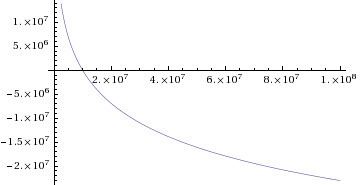 | ||
The term Napierian logarithm or Naperian logarithm, named after John Napier, is often used to mean the natural logarithm. Napier did not introduce this natural logarithmic function, although it is named after him. However, if it is taken to mean the "logarithms" as originally produced by Napier, it is a function given by (in terms of the modern logarithm):
(Since this is a quotient of logarithms, the base of the logarithm chosen is irrelevant.)
It is not a logarithm to any particular base in the modern sense of the term; however, it can be rewritten as:
and hence it is a linear function of a particular logarithm, and so satisfies identities quite similar to the modern logarithm, such as
Properties
Napier's "logarithm" is related to the natural logarithm by the relation
and to the common logarithm by
Note that
and
For further detail, see history of logarithms.
